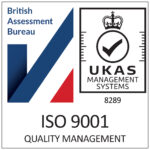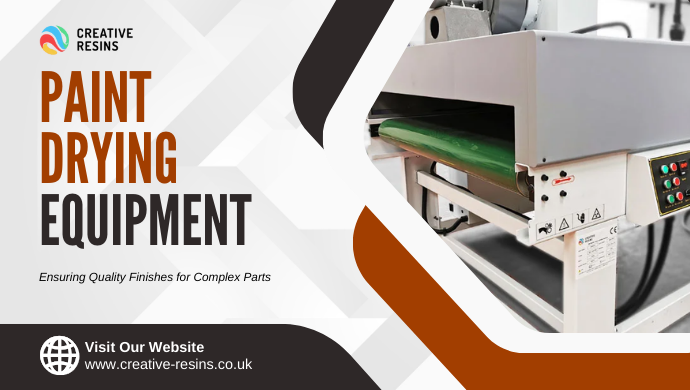Paint Drying Equipment: Ensuring Quality Finishes for Complex Parts
The importance of effective paint drying cannot be overstated in manufacturing and automotive finishing. The drying process is a critical step that directly influences the quality, durability, and appearance of painted surfaces. Whether it’s a sleek automotive body, a profiled door, or intricate components with complex geometries, the proper drying equipment ensures that paints cure properly, providing a flawless finish that meets industry standards. As technology evolves, so do the methods and equipment used for paint drying.
Today’s market offers a range of solutions tailored to various paint types, including CR (Creative Resins) water-based paints and solvent-based lacquers. Each type of paint has unique properties and drying requirements, necessitating specialized equipment to achieve optimal results. Let us explore the various types of paint drying equipment available, their applications in drying profiles and complex parts, their advantages, best practices for operation, and future trends shaping this essential aspect of the finishing process. Whether you are a manufacturer looking to enhance your production capabilities or an enthusiast keen on understanding the intricacies of paint application, this comprehensive guide will provide valuable insights into the world of paint drying equipment.
Understanding Paint drying equipment
Paint drying equipment encompasses a variety of machines and technologies designed to accelerate the curing process of paints and coatings. The primary purpose of this equipment is to remove moisture or solvents from the applied paint film, allowing it to harden and adhere properly to the substrate. Proper drying is crucial for aesthetics and ensuring the finish is resistant to environmental factors such as humidity, temperature fluctuations, and physical wear.
Applications of Paint Drying Equipment
Profiles and Curves
One of the significant challenges in paint application is ensuring that all surfaces—especially those with curves or profiles—receive adequate coverage and dry evenly. Paint drying equipment designed for these applications often incorporates features that facilitate airflow and heat distribution around
complex shapes. This ensures that even hard-to-reach areas dry effectively without compromising finish quality.
Profiled Doors and Complex Parts
Profiled doors and intricate components are standard in the construction and automotive manufacturing industries. These parts often feature unique designs that require specialized drying solutions. For instance, automated systems may transport these parts through drying tunnels, where they are subjected to controlled heat sources. This method speeds up production and minimizes handling damage during the drying process.
Advantages of Advanced Paint Drying Technologies
Time Efficiency
One of the most significant advantages of modern paint drying technologies is their drastically reduced drying times. Traditional methods could take hours or even days for paints to cure fully; however, advanced systems can achieve similar results in minutes or seconds. This efficiency allows manufacturers to increase throughput without sacrificing quality.
Quality Improvement
The quality of a painted finish is paramount in many industries. Advanced paint drying equipment improves finish quality by ensuring uniform curing across all surfaces. This results in enhanced gloss levels, better adhesion properties, and increased scratches and environmental damage resistance. Proper curing minimizes issues like bubbling or peeling associated with inadequate drying.
Compatibility with Different Paint Types
CR Water-Based Paints
CR water based paints are popular due to their lower environmental impact than solvent-based alternatives. They require specific considerations during the drying process. Water-based paints tend to have higher moisture content; adequate ventilation and controlled temperature settings are essential for optimal curing. Equipment designed specifically for water-based paints often includes features like humidity control systems to prevent issues related to moisture retention.
Solvent-Based Paints/Lacquers
Solvent-based paints typically cure through evaporation rather than chemical reaction; thus, they require different handling during drying. The choice of paint drying equipment can significantly impact how quickly solvents evaporate while maintaining finish quality. Systems that utilize controlled heating or infrared technology can effectively accelerate solvent evaporation without compromising the integrity of the paint film.
Best Practices for Operating Paint Drying Equipment
Preparation Steps
Proper preparation is crucial for optimal results before using any paint drying equipment. This includes ensuring that substrates are clean, contaminant-free, and primed adequately if necessary. Operators should familiarize themselves with equipment settings tailored for specific paint types to ensure compatibility.
Operating Procedures
Mechanical finishing allows consistency across multiple pieces, ensuring each item meets exacting standards. This process is particularly advantageous when creating prototypes or production runs where uniformity is essential. The versatility of mechanical finishing techniques also enables creators to experiment with different textures and effects, adding depth and character to their resin creations. The precision and finesse achievable through mechanical finishing contribute significantly to the allure and marketability of casting resin products.
Future Trends in Paint Drying Technology
Innovations on the Horizon
As industries continue to evolve toward greater efficiency and sustainability, innovations in paint-drying technology are emerging rapidly. One notable trend is the integration of automation and intelligent technology into painting processes. Automated systems with sensors can monitor temperature and humidity levels in real time, adjusting parameters for optimal curing conditions. Another exciting development is the rise of UV curing technology, which uses ultraviolet light to initiate rapid curing processes for certain coatings. This method speeds up production and reduces energy consumption compared to traditional thermal methods.
Sustainability Considerations
With increasing awareness of environmental issues, there is a growing demand for sustainable practices in manufacturing processes, including paint application and drying. Many manufacturers are exploring eco-friendly alternatives such as low-VOC (volatile organic compounds) paints and energy-efficient drying systems that minimize waste and emissions.
Conclusion
In conclusion, effective paint drying is a crucial aspect of the manufacturing and finishing processes that directly impacts the quality and durability of painted surfaces. As we have explored, the range of paint drying equipment available today is designed to meet the diverse needs of various industries, accommodating complex shapes, profiles, and different types of paints, such as CR water-based and solvent-based formulations.
The advantages of modern paint drying technologies—such as reduced drying times, improved finish quality, and compatibility with various paint types—make them indispensable in today’s fast-paced production environments. By implementing best practices for operating this equipment, you can ensure the safety of your operations and the consistency and reliability of your finished products. For manufacturers seeking to improve their production capabilities or enthusiasts eager to understand the intricacies of paint application, investing in advanced paint drying solutions is a step toward achieving superior quality finishes.
Ultimately, whether dealing with profiled doors or complex automotive parts, understanding and utilizing effective paint drying equipment will ensure that your products look great and stand the test of time.
We at Creative Resins offer superior quality paint drying equipment at the best prices. Call us now! – 01795 411820



